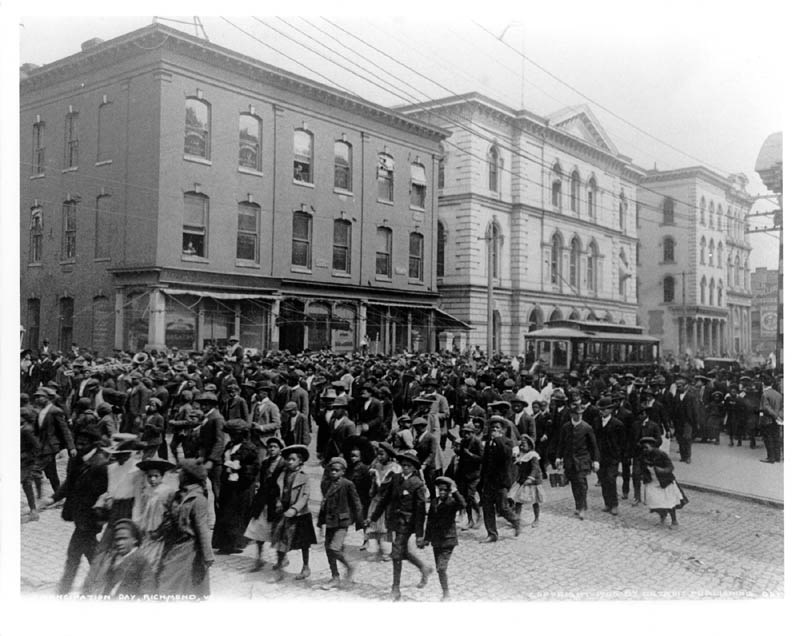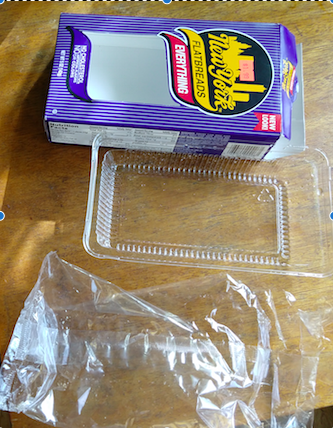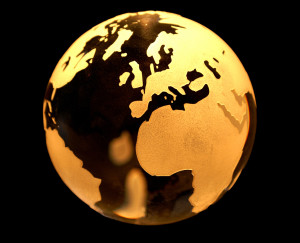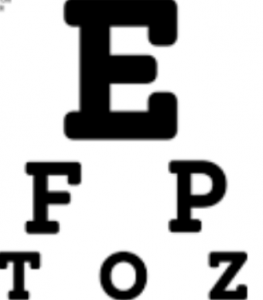Category: Business Ethics
Patagonia’s Former CEO Speaks Out
If you’re wondering how social entrepreneurship works at a marquis company, try this New York Times interview with Patagonia’s recent CEO, Rose Marcario.
I’ve cited Patagonia many times as an example of a company that gets a lot of things right. Social responsibility is part of its DNA and has been from the very beginning. I was very intersted to learn about some of the initiatives under Marcario’s leadership, and particularly the open embrace of political activism.
Not Showing Your Values is Also a Value Choice
Chris Brogan noted in this morning’s newsletter:
For decades, the rule has been “no politics nor religion in business.” That’s gone. If you say nothing or try to stay neutral, you’re voting. If a company takes money and does business with an organization a person doesn’t support, this might be grounds to do business elsewhere.
This Will Not Make Me Popular with the Ultra-Left

Creator: Sam Valadi
Credit: ZUMAPRESS.com/Newscom
Copyright: via ZUMA Wire
A friend–my ex-boss, in fact–sent me this article on how 30 billionaires had vastly increased their wealth during the pandemic.
I wrote back:
While this is a good tool for generating outrage, it’s not where I will put my own energy. First, because I think one of the mistakes the Left makes is to try to divide ourselves to the super-rich and make them targets. Much more productive IMHO to work with them, make them allies, to fund necessary research and actions (as several of these people are cited as doing).
Second, to work for a tax structure that helps redistribute toward those in need. Harness the class anger toward this, rather than generating enmity toward people who we make less likely to do the right thing by shaming them and having demonstrations at their offices. Guilt and shame are lousy motivators. Let’s find ways to honor their virtue rather than shame their success.
On that second point, it would not be hard to find one-percenters who would join and be a public face for that movement. Many multimillionaires and even a few billionaires have come out for income equality, offered to pay higher taxes, donated much of their fortunes, subsidized social change movements. Do the names Warren Buffett, Bill Gates, or George Soros ring any bells?
I have a relatively modest 5-figure income, but I travel in circles where a lot of people have seven- or eight-figure annual incomes. My life is full of abundance and blessings, and I don’t begrudge them their wealth. I do begrudge those who push for corporate welfare policies that penalize the poor while adding unnecessary zeroes at the end of their own already large bank balances–people whose goal in life seems to be transferring as much wealth as possible from the poor to the super-rich. And I don’t believe those few people, powerful though they are, represent the majority of the one percent.
In fact, I believe that smart corporations recognize that labor and consumers are partners in their success who deserve to share in the wealth they help create. They embrace social responsibility, partner actively with neighborhood groups, and grow their businesses by finding ways to serve.
But there’s an element on the left that sees wealth as inherently evil, and the wealthy as always the enemy.
I remember when a philanthropist and peace activist I know lost her house in a fire. Some of the public comments on the news stories were not only not compassionate, they were downright vicious: how dare she accumulate wealth and live in a mansion?
Well, sorry, but making her the enemy is just plain stupid. She’s an activist and philanthropist who chooses to use her money for good. And even if she were totally selfish, she still wouldn’t be the enemy. Rich or poor, we all want dignity and respect. And when we pigeonhole her as an enemy, what we do is alienate not just her but others in her cohort. So non-activist wealthy people who might have funded our causes are instead pushed into the arms of those who proclaim respect for the wealthy. If their politics are not strong, they may even choose to fund causes that actively defend their privilege.
WordPress is not letting me link properly, so here are the sources:
- Billionaires who got richer during the pandemic: https://www.usatoday.com/story/money/2020/12/01/american-billionaires-that-got-richer-during-covid/43205617/
- Public face: https://www.cnbc.com/2019/12/31/what-billionaires-said-about-wealth-inequality-and-capitalism-in-2019.html
- Donated: https://www.msn.com/en-us/money/companies/warren-buffett-donates-2-9-billion-to-gates-foundation-family-charities/ar-BB16u7tr
- Income inequality: https://www.msn.com/en-us/money/companies/warren-buffett-donates-2-9-billion-to-gates-foundation-family-charities/ar-BB16u7tr
- Corporate welfare: https://www.huffpost.com/entry/ten-examples-of-welfare-for-the-rich-and-corporations_b_4589188
- Penalize the poor https://talkpoverty.org/2014/10/07/punished-for-being-poor/ . For a specific discussion of the subsidy wealtheir people get from low-paid immigrant labor, https://www.stltoday.com/opinion/mailbag/underpaid-immigrants-help-poor-subsidize-the-rich/article_2f1d8094-9700-5f8b-8d38-562fd75a7657.html
-
-
-
-
-
-
-
-
-
-
-
-
-
-
-
-
-
-
-
-
-
-
-
-
-
-
-
-
-
-
-
-
-
-
-
-
-
-
-
-
-
-
-
-
-
-
-
-
-
-
-
-
-
-
-
-
-
-
-
- Donated their fortunes: https://www.msn.com/en-us/money/companies/warren-buffett-donates-2-9-billion-to-gates-foundation-family-charities/ar-BB16u7tr
-
-
-
-
-
-
-
-
-
-
-
-
-
-
-
-
-
-
-
-
-
-
-
-
-
-
-
-
-
-
-
-
-
-
-
-
-
-
-
-
-
-
-
-
-
-
-
-
-
-
-
-
-
-
-
-
-
-
-
To Know DT’s REAL Beliefs, Watch His Actions
Buried in the registration form for the first post-lockdown rally to re-elect you-know-who:

So typical of the hypocrite-in-chief. The man who first denounced the virus as a hoax, then fueled anti-Asian racism, and most recently caused a quantity of precious test kit swabs to be thrown away because he refused to put on a mask to tour the plant. The man whose bungling of our public emergency started with the dismantling of long-standing resources to fight pandemics and continued through the unnecessary deaths of tens of thousands of Americans.
(Aside: the cowards who ran the factory let him come in anyway. They should have said, “No mask? Then no tour.” Perhaps they were afraid of being ridiculed in a nasty tweet. Or of losing a federal contract. The former, which was quite likely, would put them in a prestigious club of people and organizations important enough to be publicly scorned by the country’s most incompetent president. The latter would have been a juicy lawsuit, and meanwhile, New England’s governors would have been falling all over themselves to grab those suddenly available supplies.)
The man who also refused to take the necessary actions months ago that would have contained the virus impact, as countries from Vietnam to New Zealand did, along with countries more comparable to the US, like Germany and South Korea.
Say one thing, do another is a hallmark of this man. That Tulsa rally is an example. Yes, we see his occasional (and usually, too-little, too-late) condemnation of racism. But we also see this event scheduled on Juneteenth, in Tulsa, Oklahoma. Tulsa had been the site of the most successful black neighborhood in the United States, until white racist mobs burned it down and killed hundreds of people on May 31 and June 1, 1921. And of course, we now the long history of his racist actions and comments, going all the way back to his vendetta against the Central Park Five and the housing discrimination he and his father were repeatedly sued over by the US Justice Department.
If it were either Juneteenth or Tulsa, it could conceivably have been a coincidence. But to have the kick-off event for the revived in-person re-election campaign held on that day, in that city, could not be a coincidence. It’s a dog-whistle to the racists, no doubt schemed up by one of DT’s senior advisors (I don’t think the man himself is educated enough to know about Tulsa, and it wouldn’t shock me if he hadn’t known what Juneteenth is.)
Amazon’s Two-Edged Sword

A marketer friend in Connecticut sent out a wonderful tribute to his 95-year-old mom and used her to illustrate several points about customer-centric marketing and customer service. In the course of this article, he waxed rhapsodic about Amazon. I see Amazon (and some other companies) as not always so wonderful–and the public having blinders on about its predatory practices. This is what I wrote back to my friend. The third link is actually a very complete summary of the issues:
* * *
Great piece! I love the way you take your mom’s everyday activities and spin them into marketing do and don’ts.
- They are a serious threat to the vibrancy of our downtowns. Can you imagine Stamford with only a few struggling chain stores? Goodbye to that nice falafel shop and Asian restaurant across the street from (Amazon-owned) Whole Foods (I’ve often eaten at one or the other on my way to NYC). Book stores, hardware stores, appliance stores–and all the traffic into town those stores bring–are increasingly shaky in an Amazon-dominated world. And when that foot traffic goes away (assuming it comes back after we’re finally out of quarantine), so do the restaurants, night spots, etc.
- Their labor record is very poor. Their treatment of independent publishers is not only very poor but IMHO a violation of monopoly rules. Did you know that Amazon, a retailer, takes the 55% industry-standard wholesaler discount instead of the 40% retailer level for its smaller publishers selling them physical books? (They do have much better deals for publishers on the books their subsidiary KDP prints on demand.) This is one of the two reasons they’re killing the independent bookstores (the other is that they’ve successfully trained the public to think of them first). Also, they present used and new versions of the same title on the same results page, which is a complete stab in the back to publishers–sort of like offering counterfeit designer watches and purses. I have no objection to selling used books (and keeping them out of landfills)–but not in direct competition with the same book, new.
- For a long time, Amazon didn’t charge sales tax, which was an especially cruel anticompetitive practice in that it not only hurt businesses who have to collect those taxes, but also reduced the availability of government services by reducing government revenues.
- Amazon has actively and repeatedly suppressed competitors. This includes using its enormous data on customer behavior and buying patterns to manufacture its own products, sold through its own channels. And students of the company’s behavior see evidence that once competitors are eliminated or demand spikes (as on household cleaning products during the pandemic), Amazon’s prices rise, sharply.
A Great Opportunity for Eco-Designers
We still have a long way to go on eco-friendly packaging. I just finished a box of crackers. I washed out the plastic tray and will add it to the plastics recycling bag when it dries, put the box in the paper recycling bin, and threw away the shrink-wrap around the tray in the actual trash.

Most people won’t bother to do all this. Designers: this is a profit opportunity for you: create packaging that people only have to put in one place when it’s over, and that can be repurposed later–and remember that today’s compostable “solution” is only an alternative if people have access to an industrial compost facility. Most people don’t.
And businesses: as you adopt truly eco-friendly packaging, you’ve got a branding and marketing opportunity.
50 Years of Earth Day: A Planetary AND Personal Journey
50 years ago today, Earth Day was launched as a one-time event. Who would know it would not only become annual but turn into a massive worldwide movement that has changed our world for the better in so many ways?

The Environmental Movement is Now Mainstream
Since that first Earth Day, we’ve made a lot of progress. A few examples:
- Public awareness of climate issues–and of the lifestyle changes we can make to improve things–is at an all-time high
- Millions of people have taken to the streets to demand action on climate
- Science has made huge strides in areas ranging from green energy to biomimicry; amazing new green technologies are constantly becoming more efficient, less expensive, and more deployable
- Many countries have shifted away from fossil and nuclear toward clean technoogies such as solar, wind, and hydro–and these technologies are much more efficient than they were 50 years ago
- Veganism and vegetarianism (two of the easiest ways to reduce our personal climate footprint) are far more accepted, even in places like Germany that used to be quite hostile)
- From bringing our own reusable bags (pre-COVID) to discovering foods like tofu, the way we shop and eat has drastically shifted, even for those still eating meat
- Nearly every country in the world agreed to the Paris Climate Accord (which doesn’t go nearly far enough, and which the current US administration has pledged to leave–but it’s a start)
- A 16-year-old Swedish climate activist addressed the UN, arriving in the US aboard a green-energy boat (yes, I’m talking about Greta Thunberg)
- Almost every major company has at least a sustainability coordinator, if not a whole department–and these folks have drastically reduced the negative impact of business on the environment
- Here in the US, the well-thought-out Green New Deal is getting serious attention
- We’re beginning to recognize climate justice: looking at the environment from a lens that includes economic and social justice issues, such as why so many polluting plants are in poor communities and why so many of those communities are “food deserts” with little or no access to healthy foods
My Environmental Journey Started That Day
- In 1977, I was one of about 2,000 people and 1414 who got arrested at the construction site of the Seabrook nuclear power plant in New Hampshire. We had no way of knowing that our action would birth a national safe energy movement. On the 40th anniversary, I wrote about why this action was so important. (The link is to Part 1 of my 5-part series. There’s a link to the next installment at the bottom of each earlier one.)
- In 1984, I worked with my city counselor to get the first nonsmokers’ rights regulations in Northampton, Massachusetts. Very few communities had any protection for non-smokers at that time. I don’t think it’s a coincidence that within a few years, most restaurants in town were non-smoking and that the number of restaurants in town increased significantly.
- And in 1999, I founded and became the public face of the movement that saved a mountain right near my house.
It was the success of Save the Mountain that led me into the work of educating the business community on how to be profitable while saving the world.
I hope to be able to notch a fourth victory: helping to turn the business world away from a profit-only model and toward a model of making a profit through identifying, creating, and marketing products and services that turn hunger and poverty into abundance, war and violence into peace, bigotry into strength in diversity, catastrophic climate change into planetary balance, pandemics into global health, etc. I see business as a lever for creating the world we want.
This is not new. Social impact companies have been around at least since the mid-19th century, but it’s been on the fringe. Believe it or not, UK chocolate giant Cadbury was founded as a social impact company. But I think now we have the chance to change the entire business culture, so profitable business social and environmental responsibility becomes mainstream.
But There’s Still Lots to Be Done!
For all its positive presence, business is still a long way from solving problems it largely created. Pollution, resource depletion, and labor issues are just a few of many issues that need to be addressed, especially as world population grows faster than at any time in history. And governments are not always our allies. The present Brazilian and US federal governments, for instance, are actively sabotaging the eco-agenda. Each of us needs to make the difference we can make–and each of us CAN find a way to make that difference (contact me if you want help figuring out what the most impactful way for you and your business).
No Cost Resources and MY Gift to Help You Celebrate Earth Day THIS Year
Let’s start this Earth Day party off with something that will help you save energy, water, and money–my ebook, Painless Green: 111 Tips to Help the Environment, Lower Your Carbon Footprint, Cut Your Budget, and Improve Your Quality of Life—With No Negative Impact on Your Lifestyle. I normally sell this for $9.95, but as my Earth Day gift to you, you can get it at no cost. Just visit PainlessGreenBook.com and enter “earthdayblog” in the code box. This will also sign you up to my informative Clean and Green Club monthly newsletter.
A group based near me in Western Massachusetts, Climate Action Now, offers several Earth Day events starting this evening with a 6:30 ET panel of legislators and activists. This may be especially interest if you live in Massachusetts, but it’s virtual and open to all.
C, J, H: My Three “Brogan Words” for 2020, Part 1
Every year, bestselling author and social media visionary Chris Brogan challenges his huge reader base to come up with three words to provide focus for the coming year. This year, I decided to take the challenge for the first time since 2016. And this time, I’m going to emblazon them on a printout in huge type, and post it where I can see my words every day. My three words are:
- Clarity
- Justice
- Healing
Clarity

The year 2020 reminds me of 20/20 vision: seeing with perfect clarity. While I don’t expect to achieve perfect clarity, even with the new glasses I’ve just been prescribed ;-), I do want to focus on seeing and acting as clearly as possible.
It’s been several years since I changed the focus of my business toward helping other businesses (and other types of organizations such as nonprofits) find the sweet spot where profitability intersects with environmental and social good.
I now market myself as the person who can help any organization discover opportunities to do go in the world by creating, identifying and re-purposing, and/or marketing profitable products and services that turn hunger and poverty into abundance, war into peace, and catastrophic climate change into planetary balance.
I’ve gotten a lot clearer in my messaging since starting this quest in the summer of 2013, since giving my TEDx talk in 2014, and even since publishing my 10th book, Guerrilla Marketing to Heal the World, in 2016 (which Chris Brogan endorsed, along with Seth Godin, Jack Canfield, and many others).
But I’m still nowhere near as clear as I need to be about:
- Who wants to pay me to do this work?
- Which services they most want, and to achieve what goals?
- How to set a price structure that’s fair both to solopreneurs and large corporations?
- Who do I most want to serve?
I’m beginning to figure out the answers. I’ve settled on pricing based on the size of the organization, which seems reasonably fair because larger organizations are more complex and therefore a task such as a marketing plan our outlining a product development campaign will take a lot more of my time–but I’m not sure I’ve got all the bugs worked out yet. I’ve realized that I’d rather work with small entities than large ones, but I am very open to being farmed out by a larger entity to their smaller customers, suppliers, or business units–and to the larger entities sponsoring me in other ways, such as funding my speaking to organizations that can’t otherwise afford me.
Hopefully, seeing that message of clarity on the wall of my workspace every day will inspire me to figure all this out, and to make my message so clear that everyone understands exactly how I can help and why it’s important.
I’ll discuss Justice in Part 2 (with lots of links), and Healing–including a deeply personal experience that happened to me this month–in Part 3.
The Spammer/Antispammer Arms Race: Why This Marketer Says Don’t Market This Way
Lately, my inbox is full of courses to market via Facebook Messenger.
What if we could have ONE communication channel that doesn’t get polluted by marketers trying to hijack it? There is no refuge anymore! I remember when the only things in my inbox were things I wanted. I remember when I didn’t get blasted with texts from companies that don’t even know me. I am a marketer, and I understand the need to reach out. But damn it, we need some spaces where we’re not getting marketed to.

- Instead of random texting, text your own customers who’ve given you their mobile numbers as they show up within a mile of you, with friendly, helpful information about today’s cool event (yes, geotexting exists)
- Instead of using robocalls to make deceptive offers, use them to notify your customer base of important news, like a weather-related school closing or a construction delay on a major artery
- If your Facebook page uses the automated FB Messenger feature, send links to your FAQ and three most popular or useful pages on your own website—but also make sure you have a human being reading the inbound messages and responding quickly. And figure out a way to only send that autoresponder the first time you get a PM from any specific person.
So here’s MY soft-sell pitch at the end of this useful (I hope) content: if you need help developing non-intrusive, welcomed marketing, drop me a line or give me a call. Especially if your business or product/service/idea contributes to environmental and social good.
